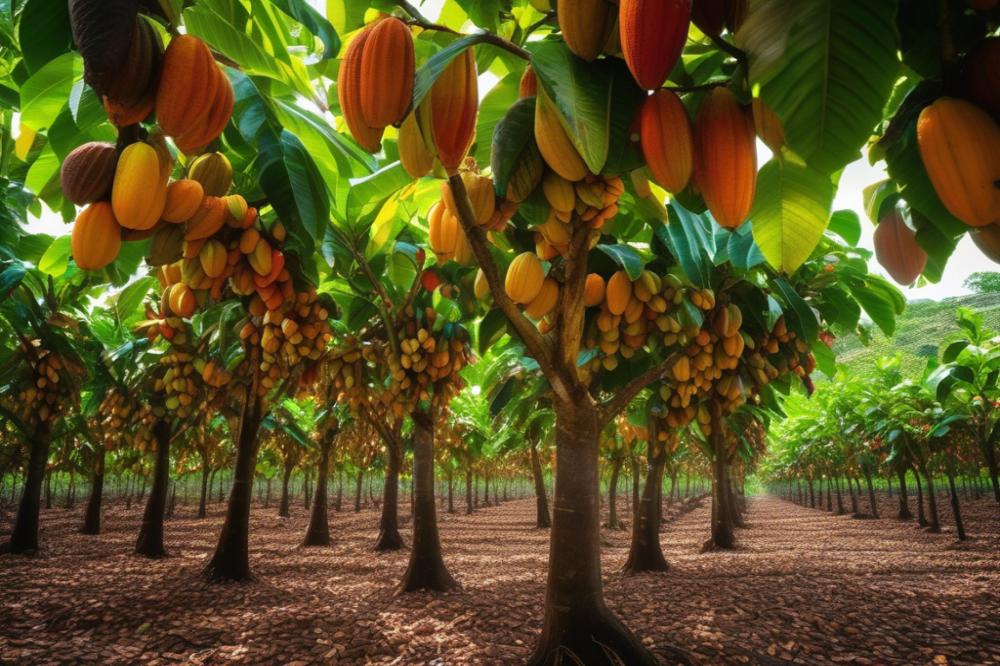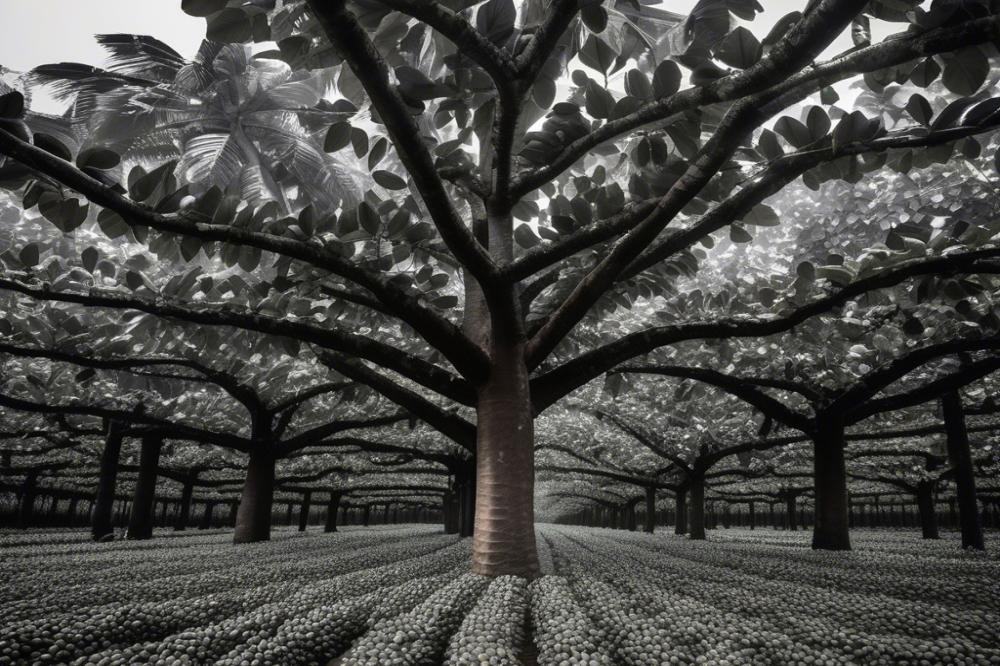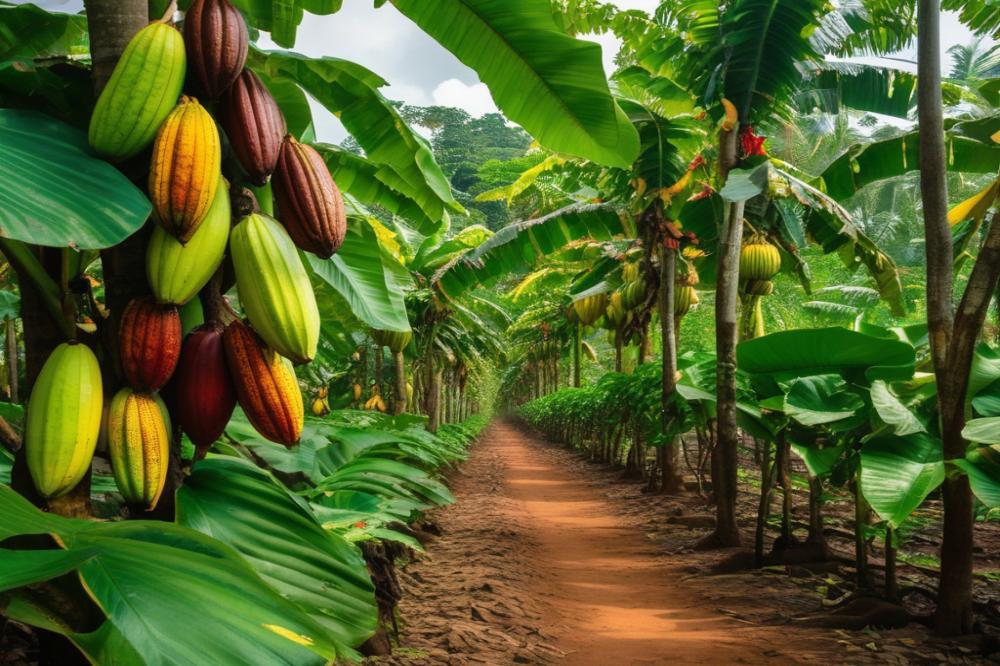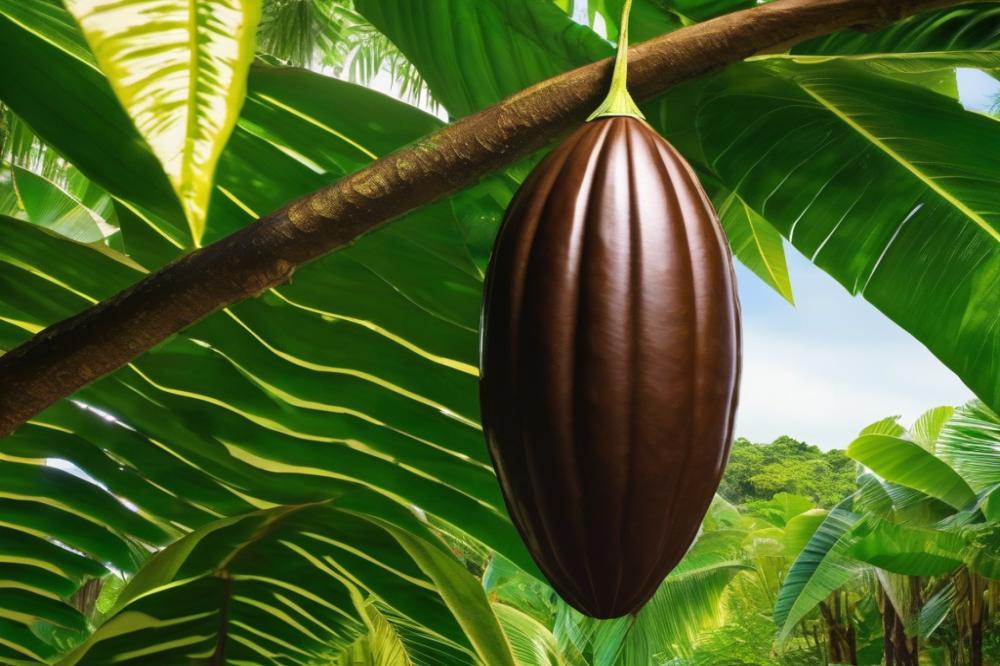Introduction
The Cocoa plant holds great significance in both agriculture and the global economy. Each year, millions of people rely on cocoa for their livelihoods. Countries in West Africa, such as Ivory Coast and Ghana, are among the largest producers, contributing significantly to regional development. Chocolate lovers around the world enjoy cocoa’s delightful flavors, but the journey from bean to bar is not always straightforward.
cocoa fertilizers play a crucial role in enhancing cocoa yields and supporting plant productivity. Farmers often face challenges in maintaining soil health and providing essential nutrients that cocoa trees require for optimal growth. With nutrient management becoming increasingly important, the right fertilization strategies can make a substantial difference in farm output.
Ultimately, effective use of cocoa fertilizers can help promote sustainable agriculture. By integrating proper fertilization strategies, farmers can improve crop resilience and profitability, paving the way for a more productive future in cocoa farming.
Understanding cocoa yields

Cocoa yields refer to the amount of cocoa produced per hectare of land. This measurement is crucial for farmers and the industry as a whole. High yields indicate healthy plants and successful farming practices. They can lead to increased income for farmers and better quality products for consumers.
Several factors influence cocoa yields. Soil health plays a significant role. nutrient management is essential for plant growth. Without proper nutrients, Cocoa plants struggle to thrive. Additionally, the choice of cocoa farming techniques can impact productivity. Farmers who adopt modern agricultural practices often see better results. Weather conditions also matter. Climate change has altered rainfall patterns, affecting yields in many regions.
Fertilizers have a direct impact on enhancing cocoa yields. Both organic and chemical fertilizers can boost growth and increase production. These substances supply essential nutrients that cocoa plants need to flourish. Proper fertilization strategies can make a noticeable difference. For example, crop rotation helps maintain soil health, leading to better yields over time. Sustainable agriculture practices aim to balance nutrient requirements without harming the environment.
By using fertilizers effectively, farmers can address nutrient deficiencies that might hinder growth. Integrated farming approaches consider the entire ecosystem. This way, cocoa farmers can optimize yields while promoting sustainability. With the right balance of nutrients and careful management, achieving high cocoa yields becomes feasible.
Nutrient Management in Cocoa Farming

Nutrient management is critical for the successful cultivation of cocoa. Essential nutrients help sustain cocoa plant productivity. Among these, nitrogen, phosphorus, and potassium play vital roles in the growth cycle of cocoa trees. Each nutrient contributes uniquely to the overall health and yield of the crop.
Nitrogen promotes vigorous leaf and stem growth. This nutrient is essential for photosynthesis and helps the plant generate energy. It aids in the formation of chlorophyll, which is crucial for healthy foliage. Adequate nitrogen levels lead to robust cocoa trees capable of supporting heavy fruit loads.
Phosphorus supports root development and flowering. Strong roots can absorb more water and nutrients from the soil. This nutrient also plays a part in seed formation and helps improve the quality of cocoa pods, enhancing overall yields.
Potassium, another key nutrient, strengthens plant cells. It is vital for water regulation within the cocoa plant. Healthy cocoa trees are better able to resist pests and diseases. This can significantly reduce losses and increase crop resilience.
Micronutrients must not be overlooked. Elements like magnesium, calcium, and sulfur aid in various plant functions. For example, magnesium is necessary for chlorophyll production. Small amounts of these nutrients can greatly influence fertility and soil health.
Employing effective nutrient management strategies is vital. Various methods can be integrated into cocoa farming techniques. Agricultural practices such as crop rotation and the use of organic fertilizers can improve soil quality over time. These sustainable agriculture approaches promote a balanced ecosystem, ultimately leading to better cocoa yields.
Farmers often face a decision between using chemical fertilizers and organic fertilizers. While chemical fertilizers provide immediate nutrients, organic options improve soil fertility in the long run. A combination of both can create an optimal fertilization strategy that meets the cocoa plant’s diverse needs.
Sound nutrient management relies on careful planning and monitoring. Regular soil tests provide essential information about nutrient levels. This helps farmers make informed decisions and tailor their fertilization strategies accordingly.
Continually adapting to new knowledge and practices is essential for success. This flexibility can help address challenges in cocoa farming. Ultimately, effective nutrient management leads to healthier plants and increases productivity.
Soil Health and Fertility

Soil health plays a critical role in cocoa cultivation. Healthy soil provides essential nutrients required for the growth of cocoa plants. When farmers focus on maintaining soil fertility, they often see improvements in cocoa yields. A well-balanced soil can support the vigorous growth of cocoa trees, leading to a bountiful harvest.
The relationship between soil properties and cocoa productivity is significant. Soil texture, moisture retention, and pH levels all influence how well cocoa trees thrive. Adequate nutrient management is vital. Plants need nitrogen, phosphorus, and potassium to grow robustly, and deficiencies can directly impact the quality and quantity of the crop.
Farmers can adopt various practices to improve soil health. Adding organic matter such as compost can greatly enhance soil structure. This practice helps retain moisture and promotes beneficial microorganisms. The use of organic fertilizers is becoming more popular among cocoa growers because they support sustainable agriculture. In contrast, chemical fertilizers can be helpful but risk degrading soil health over time.
Implementing effective agricultural practices is key to success. Crop rotation is one strategy that helps prevent soil depletion. By alternating crops, farmers can restore nutrients and reduce pest populations. These practices contribute to long-term soil fertility and eco-friendly farming.
Developing good fertilization strategies is crucial. Regular soil tests can inform farmers about nutrient levels and deficiencies. With this information, tailored fertilization can occur, optimizing nutrient availability. Sustainable cocoa farming techniques not only boost production but also protect the environment for future generations.
Types of Cocoa Fertilizers
Overview of Organic Fertilizers and Their Benefits
Organic fertilizers play a vital role in enhancing soil health. They are made from plant or animal matter and include compost, manure, and cover crops. These materials add nutrients slowly over time, promoting a steady release into the soil. Cocoa plants benefit immensely from this gradual nutrient availability, leading to improved cocoa yields. When farmers implement organic farming techniques, they often notice healthier plants and richer soil. The use of compost also fosters beneficial microorganisms, which help decompose organic matter. By practicing crop rotation, farmers can further enrich soil and manage nutrients effectively.
Discussion on Chemical Fertilizers and Their Appropriate Use
Chemical fertilizers, on the other hand, offer a more immediate solution to nutrient deficiencies in crops. They contain specific nutrients, such as nitrogen, phosphorus, and potassium, that can quickly boost plant growth. While these fertilizers can enhance productivity in the short term, improper use carries risks. Overapplication may lead to soil degradation and water pollution. Careful nutrient management is essential when using these products. Farmers must analyze soil tests and understand the specific needs of their cocoa plants. When aligned correctly, chemical fertilizers can enhance agricultural practices in cocoa farming, contributing to a more productive harvest.
Comparison of Organic Versus Chemical Fertilizers in Cocoa Farming
Comparing organic and chemical fertilizers reveals both strengths and weaknesses. Organic options improve long-term soil sustainability. They reduce the likelihood of nutrient runoff and support a balanced ecosystem. Conversely, chemical fertilizers can provide rapid plant response but require exact applications. Understanding the differences helps farmers create effective fertilization strategies. Many cocoa farmers are now looking at sustainable agriculture methods. They often blend both types of fertilizers, using organic to enhance soil health and chemical to address immediate needs. Crafting a tailored approach allows for better nutrient management and ultimately boosts cocoa yields.
Cocoa Farming Techniques and Agricultural Practices
Cocoa farming requires specific techniques to thrive. Farmers often focus on effective methods to boost cocoa yields. Planting in diverse patterns helps to maximize land use. Shade trees play a vital role, providing protection from harsh sunlight. This environment allows cocoa plants to flourish.
Nutrient management is essential for achieving high productivity. Agricultural practices can greatly influence the efficiency of fertilizers. By understanding soil health, farmers can choose the right type of fertilizer. Organic fertilizers, such as compost or manure, can enrich the soil without harming the ecosystem. Chemical fertilizers, while effective, should be used with caution to avoid soil degradation.
Crop rotation is an important strategy in cocoa farming. Alternating different crops can enhance soil fertility and reduce pest infestations. This practice helps in maintaining a balanced nutrient level in the soil. Correct rotation techniques improve the overall productivity of the land. Additionally, implementing cover cropping can be beneficial. Cover crops add organic matter back into the soil, preventing erosion and improving moisture retention.
Fertilization strategies must be carefully planned. Regular soil testing helps farmers understand nutrient deficiencies. This information allows for targeted applications, making the most of available resources. Proper management leads to healthier trees and higher cocoa yields. Sustainable agriculture practices create a cycle of renewal in the farming process.
Integrating different farming techniques offers benefits beyond just cocoa production. Healthy soils sustain crops and protect against climate change impacts. Farmers who utilize these practices often see improvements in their yield. The combined use of crop rotation, cover cropping, and proper nutrient management fosters a resilient farming system.
Fertilization Strategies for Cocoa Plant Productivity
Fertilization strategies play a critical role in enhancing cocoa yields. Cocoa plants require specific nutrients to thrive. Therefore, focusing on nutrient management can significantly improve productivity. Both organic fertilizers and chemical fertilizers offer benefits, but using them thoughtfully is key. Organic options will support soil health, while chemical ones can provide quick nutrient boosts when needed.
Timing is essential when applying fertilizers. For cocoa plants, the best times to fertilize are before the rainy season and just before flowering. These periods allow for optimal nutrient uptake by the roots. Additionally, farmers should consider local climatic conditions. Managing the timing of application can greatly influence the effectiveness of nutrients provided.
Application methods also affect how well the plants utilize fertilizers. Broadcasting, spot application, and fertigation are common techniques. Farmers can choose the method that best suits their farm’s layout and resources. Proper application not only increases efficiency but also minimizes waste.
Soil Testing and Tailored Fertilization Plans
The importance of soil testing cannot be overstated. Testing allows farmers to identify existing nutrient levels and deficiencies. This data is crucial for creating tailored fertilization plans. Customized plans take into account the specific needs of the soil and the crop. They help in applying the right amount of nutrients at the right time.
Implementing effective agricultural practices, like crop rotation, can further enhance soil quality. Rotating crops prevents nutrient depletion and helps manage pests and diseases. These methods, combined with thoughtful fertilization strategies, can sustain cocoa farming for years. Sustainable agriculture practices are essential for maintaining high cocoa productivity while protecting the environment.
Sustainable Agriculture Practices for Cocoa Production
Definition of Sustainable Agriculture in the Context of Cocoa Farming
Sustainable agriculture for cocoa farming means growing cocoa in ways that protect the environment while producing high yields. This approach focuses on preserving resources and minimizing negative impacts. Farmers aim to maintain soil health and support biodiversity. Furthermore, these practices can lead to better long-term productivity.
Integrating Sustainable Practices with Fertilizer Use
Proper nutrient management is key to successful cocoa production. Farmers can combine organic fertilizers with chemical fertilizers carefully metering their use. This strategy helps meet the nutrient needs of the plants while promoting sustainable agriculture. Additionally, using crop rotation can enrich the soil naturally, reducing dependency on synthetic products.
Examples of Sustainable Strategies Improving Cocoa Yields
One popular method is agroforestry. Growing cocoa alongside shade trees can boost cocoa yields while providing benefits to the ecosystem. It helps maintain soil health by promoting nutrient cycling. Another strategy is mulching, which protects the soil from erosion and retains moisture. These practices create a healthier environment for the cocoa trees. Integrated pest management is also significant. This method uses natural predators instead of harmful pesticides, protecting both the crops and the surrounding ecosystem.
Choosing the right fertilization strategies plays a crucial role in sustainable cocoa farming techniques. For instance, incorporating cover crops can enhance soil fertility without harming the environment. Some farmers are shifting toward using organic fertilizers, sourced from natural materials. This shift not only supports the environment but also offers healthier cocoa beans to consumers.
Through these sustainable agricultural practices, many farmers report improved cocoa yields. They find that balancing environmental care with productivity leads to high-quality crops. By focusing on both, farmers can contribute to a greener planet while securing their livelihoods.
The Path Forward for Cocoa Farming
Fertilizers play a critical role in the productivity of cocoa plants. Adequate nutrient levels can significantly boost cocoa yields, ensuring that farmers can produce enough to meet global demand. Without proper fertilization, trees may struggle to thrive, leading to lower production rates and lower quality beans.
Balance is key when considering fertilization strategies. Organic fertilizers offer valuable nutrients and improve soil health over time. However, chemical fertilizers can provide immediate results. A thoughtful approach that combines both methods can optimize nutrition for cocoa trees while promoting sustainability.
Farmers must prioritize effective nutrient management in their practices. This involves understanding the specific needs of the soil and plants. Using soil testing to guide fertilizer application can lead to more efficient use of resources. It is essential to avoid over-fertilization, which can harm the environment and reduce the long-term sustainability of cocoa farming.
As we move forward, the call to action is clear. Improved fertilization practices are necessary for sustainable cocoa farming. Encouraging farmers to adopt a balanced approach to fertilizers can lead to healthier trees, better cocoa yields, and a positive impact on their livelihoods. Together, we can promote methods that support both productivity and the planet.



